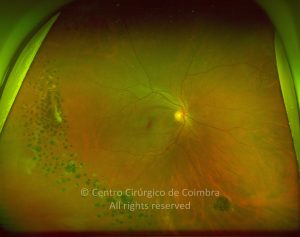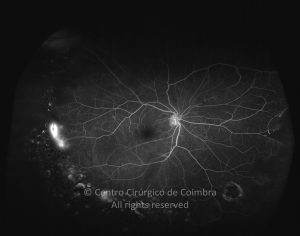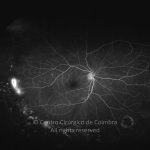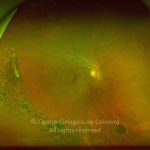Sickle cell anemia (SCD), or drepanocytosis, is caused by a mutation that gives rise to sickle hemoglobin (HbS). Patients with HbSS are more prone to retinopathy, thromboembolic complications and renal papillary necrosis. Retinopathy is detected in the second decade of life in around 42% of these individuals.
Ocular manifestations of sickle cell anemia include occlusive vascular disease of the peripheral retina, retinal neovascularization (“sea fans”) and focal intraretinal and subretinal hemorrhages (“salmon-patch” hemorrhages) at the junction of the perfused and ischemic retina. Subretinal hemorrhages, once resolved, leave iridescent patches of hemosiderin, dark patches of hyperplastic EPR (“sunburst” spots) or a hyperpigmented scar. Repeated hemorrhages lead to increased vitreoretinal traction, which increases the risk of rhegmatogenous or tractional retinal detachment.









